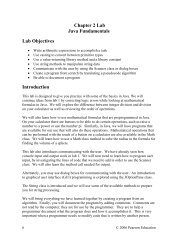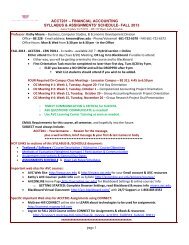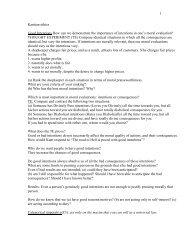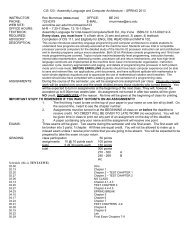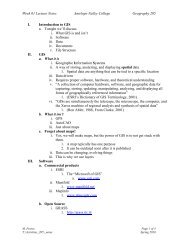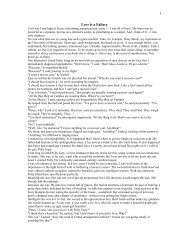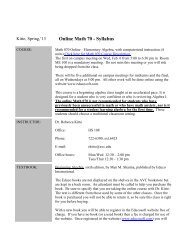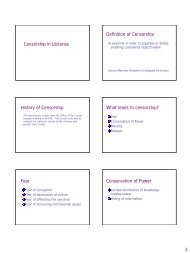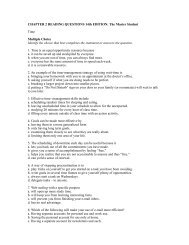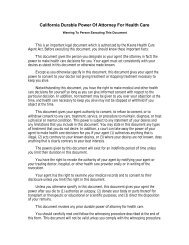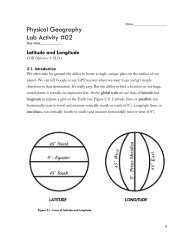DIFFERENT WAYS OF EXPRESSING CONDITIONAL STATEMENTS
DIFFERENT WAYS OF EXPRESSING CONDITIONAL STATEMENTS
DIFFERENT WAYS OF EXPRESSING CONDITIONAL STATEMENTS
Create successful ePaper yourself
Turn your PDF publications into a flip-book with our unique Google optimized e-Paper software.
2<br />
ANSWERS<br />
2. S only if N. 3. Each time S, N.<br />
4. Whenever S, N. 5. Every time S, N.<br />
6. When S, N. 7. S only when N.<br />
8. N provided that S. 9. S only provided that N.<br />
10. No S, unless N. [Nor fire unless oxygen] 11. Unless N, there’s no S. [Unless oxygen, no fire.]<br />
12. N is necessary for S. 13. Supposing that S, N.<br />
14. N is required for S. 15. N, supposing that S.<br />
16. N is indispensable for S. 17. Assuming that S, N.<br />
18. N is needed for S. 19. N assuming that S.<br />
20. N is requisite for S. 21. Admitting that S, N.<br />
22. There must be N for S. 23. N, admitting that S.<br />
24. ____, inescapably ____. 25. Providing that S, N.<br />
26. ____, inevitably _____. 27. N, providing that S.<br />
28. Postulating S, N. 29. Positing S, N.<br />
30. Hypothesizing S, N. 31. Conjecturing S, N.<br />
32. Presuming that S, N . 33. Venturing that S, N.<br />
34. S presupposes that N. 35. Presupposing that S, N.<br />
36. In the case that S, N . 37. In the event that S, N.<br />
38. S is enough for N. 39. S is adequate for N.<br />
40. S is satisfactory for N. 41. S is suitable for N.<br />
42. S is ample for N. 43. S is plenty for N.<br />
44. As soon as S, N. 45. Once S, N.<br />
46. Until N, there’s no S. 47. No S, until N. [No fire until there’s oxygen.]<br />
48. Without N, there’s no S. 49. No S without N. [No fire without oxygen.]<br />
50. In the event that S, N. 51. ___. On these terms, ___.<br />
52. N on the condition that S 53. S only on the condition that N.<br />
54. S only on the assumption that N. 55. On the condition that S, N.<br />
56. Granting that S, N. 57. Granted that S, N.<br />
Expressions 24, 26, and 51 function more as conclusion indicators: the propositions surrounding<br />
them do not constitute a conditional proposition.<br />
For the following exercise, compare you examples to mine.<br />
UNLESS/WITHOUT<br />
(a) Unless you breath, you die. Without breathing, you die. These are obviously true.<br />
(b) The propositions in (a) are expressing: Not breathing is a sufficient condition for dying.<br />
(c) If we express (b) in a standard conditional proposition: IF you do not breath, THEN you die.<br />
Note that in (a) there is no explicit negation, but (b) and (c) show that there is an implicit one.<br />
(a) Unless there is some form of electricity, one cannot use an electric light bulb.<br />
Without some form of electricity, one cannot use an electric light bulb.<br />
These two propositions are obviously true.<br />
(b) The propositions in (a) are expressing: Not having some form of electricity is a sufficient<br />
condition for not being able to use an electric light bulb.



